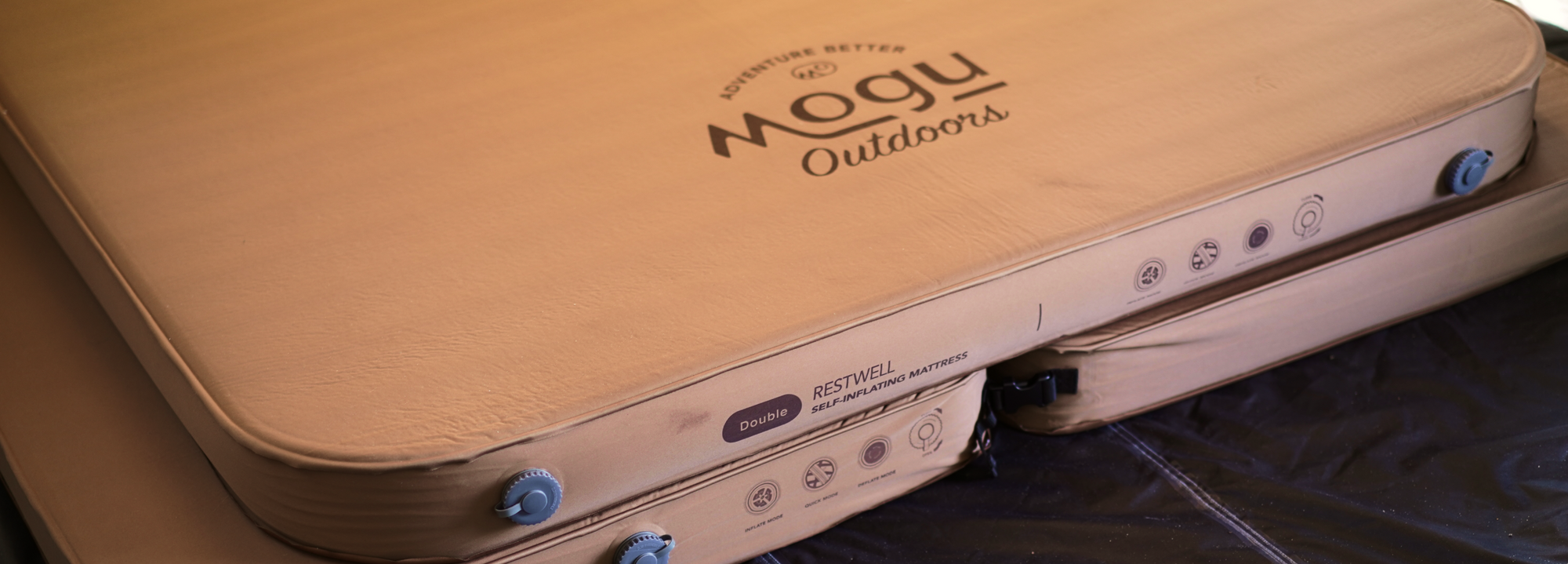There are several types of sleeping mattresses on the market, but these three are currently dominating the market: air mattress, self-inflating mattress & closed cell foam mattress. Let's briefly dive into each type and explore their pros and cons.
1. Air mattress (Airbed)
Air mattresses are the most familiar and widely used, especially in Australia, many households also keep these as spare beds for guests.

As the name suggests, these mattresses are inflated with air, usually made with PVC as the primary external material. Nowadays, many of the more refined luxury models come with a built-in pump. Internally, coil structure provides support, and the surface often has a flocked fabric for added comfort.
Pros:
- Affordable
- Compact when deflated
- Elevated height for comfort
Cons:
- You need to inflate it - manual pump, electric pump, or a built-in pump (which may require a power source).
- Not the most comfortable -They can be bouncy, noisy when you move, and when two people sleep on the same mat, their movements might disturb each other.
- Made of PVC, smell, heavy, potentially toxic, not eco-friendly.
- Potential air leaks.
- Does not retain heat - Lacks an R-value, not insulated against the cold ground.
- Locating minor punctures can be quite a task, especially in the night.
2. Self-inflating mattress
Self-inflating mattresses are gaining immense popularity among camping enthusiasts and newcomers alike. Check out the Mogu Outdoors Restwell self-inflating mattress. It doesn't require an air pump or for you to inflate the mat with your own breath like an air mattress. Self-inflating mattresses takes advantage of the mechanical properties of foam to do the hard work for you.

How does a self-inflating mattress work?
Self-inflating mattresses contain highly elastic open cell foam, and valves control the intake and release of air, allowing the mattress to compress or expand. When the valve is open, air automatically fills the cells and the foam naturally expands back to its original form. When compressed, the foam is squeezed and the air is pushed out, making it compact for storage.
Pros:
- Excellent support, no bouncy feel. Firmness can be adjusted by varying the air intake.
- Convenient to use; just open the valve and let the air in, mat will self-inflate.
- Most models come with R-value, indicating good insulation against cold.
- Quiet, stable, ensuring a peaceful sleep whether you're alone or with a partner.
- Longer-lasting - more durable, doesn't need to be replaced as quickly therefore better for the environment.
- If it get punctured, you'll still rest on foam instead of directly on the ground.
Cons:
- Bulkier when packed up.
- More expensive than air mattresses.
- On first inflation after a long period of storage, automatic self-inflation can take a longer time. (Not so much a con, but just make sure to inflate it at home for the first time and give it plenty of time to inflate. Thereafter, self-inflation will only take 2-5mins.)
- Detecting a minor puncture can be challenging.
3. Closed cell foam mattress
The final option is the foam mattress, made from closed-cell foam. No inflation needed; just unroll and use. This style of mattress is more often used when going hiking, some campers will also use this foam mat under an air mattress as insulation to help retain some warmth.

Pros:
- Inexpensive.
- Lightweight, often used by backpackers.
- Insulates against dampness from the ground.
Cons:
- Not the most comfortable option when used by itself.
Are there any other types of mattresses you think we should have included?
Which mattress do you have? Or are looking to buy?


